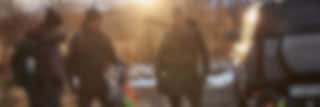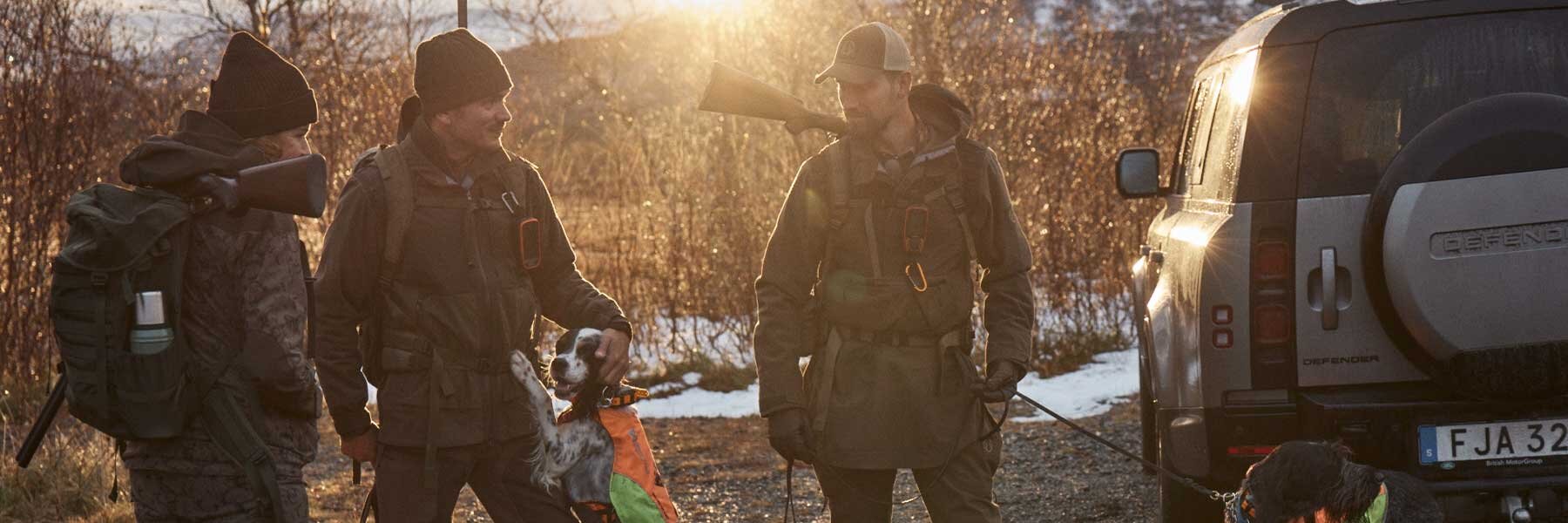Nature and its inhabitants are what drive us. Our goal is to make it easier for people to get out into nature, hunt, and feel at home.
Sustainability is a key focus for us at Chevalier, and we work continuously on improvements. As progress is made, we strive to take even more important steps in the right direction.
Chevalier is part of Open Air Group – read more about our sustainability efforts in the Open Air Group reports. Sustainability Report 2023Sustainability Report 2022Sustainability Report 2021By offering well-designed, high-quality products, we believe that more people will venture into the incredible nature around them. Not just once, but perhaps even adopting it as a lifestyle. We always treat all animals with respect and follow a responsible approach to hunting, aiming to preserve wildlife for future generations. We recognize that production and sales have an environmental impact, but we are committed to continuously learning how to minimize this impact and use resources as efficiently as possible. Quality, courage, and authenticity are at the core of what we do, including our sustainability work, which is an integral part of every decision we make.
The Product
The product is at the heart of our business. In the idea and design phase of a new product, many decisions are made that significantly impact not only production but also its use. We believe in quality – a product that lasts and serves its purpose in a timeless design, making it your favorite garment for years to come.
Product development takes time. An idea turns into a sketch, which then becomes prototypes that we test and evaluate. We don’t rush our products – every piece has a purpose.
Chemicals
We work closely with our material suppliers, not only regarding quality and functionality but also concerning chemical content. Ensuring that our products comply with the laws and regulations of the markets we operate in is our minimum standard. When we know that certain chemicals have a negative impact on health and/or the environment, we question their necessity and aim to exclude or replace them whenever possible. A key example is our ongoing effort to phase out PFAS chemicals from our water-repellent treatments. Water repellency is essential for our outerwear to keep rain from soaking in while maintaining the garment’s lightness, flexibility, and comfort. We have replaced water-repellent treatments in most of our products and are working hard toward our goal of making all our treatments PFAS-free by 2023.
Reducing our use of raw materials – We constantly strive to minimize our impact, and resource use is a crucial part of this. One example of our efforts is increasing the use of recycled materials in our products. A large portion of our polyester has already been replaced with recycled polyester. We are always looking for new materials with lower resource footprints, both in terms of raw materials and production processes that require fewer resources.
Garment production generates a significant amount of material waste. We maintain close communication with our manufacturers to minimize waste. When waste does occur, we see it as a resource and look for ways to repurpose it. Examples of products made from surplus materials include Elemore and Dovre.
Production
Having excellent partners to manufacture our garments is essential for ensuring product quality and understanding the importance of sustainable production. We collaborate closely with a select group of manufacturers in Asia and Europe, many of whom we have worked with for many years.
Code of Conduct
We have a Code of Conduct that our partners have signed. We place great importance on ensuring fair working conditions and expect our partners to share our commitment to minimizing environmental impact. Signing the agreement is just the beginning – the work is ongoing, addressing both social and environmental challenges in textile production.
Care and Repairs
A key factor in making a product last longer is proper care. Washing – Only wash your garment when truly necessary. Machine washing wears down the fabric and requires a lot of resources. In many cases, it’s enough to spot-clean dirty areas or simply air out the garment to keep it fresh. For washing tips, check out our care guide
RepairsWe develop high-quality products designed to last, but sometimes accidents happen. A fabric tear, a lost button, or a faulty zipper shouldn’t mean the end of your garment. Here are some tips to keep it going.
FabricA spark from a campfire can burn a hole in your garment. But with a simple repair patch that can be applied with adhesive, the hole can be fixed, and the garment can continue to be used. These patches are available at well-stocked hunting and outdoor stores. If you prefer sewing and need extra fabric, feel free to contact us at hello@chevalier.se
Buttons and AccessoriesSometimes, a button goes missing. Our shirts come with an extra button, either inside the placket or on the care label inside the shirt. With a needle and thread, you can easily sew a new one in place. If you’re missing an extra button or another accessory, such as buckles, please contact us at hello@chevalier.se
ZipperAfter long use, a zipper can sometimes start acting up. Often, the problem is that the puller has worn out or broken. In many cases, you can fix it easily with ZlideOn, a replacement puller that snaps onto the zipper so you don’t have to replace the whole thing. You can buy ZlideOn here

